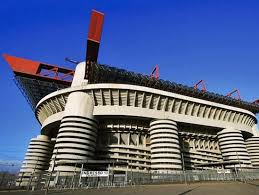August 14 – Serie A giants AC Milan and Internazionale look set to have different home grounds for the first time in their history after the San Siro, which was due to be demolished, was saved by the Regional Commission for the Cultural Heritage of Lombardy due to its history and cultural significance.
Built in 1926, the 80,000-seater San Siro is an iconic building in Milan’s landscape and a huge asset to tourism in the city after being home to two of football’s biggest clubs for almost a century.
The stadium was expected to be replaced by a new shared ground dubbed ‘The Cathedral’, which was tipped to be designed by architecture studio Populous.
However, after Italian undersecretary for culture Vittorio Sgarbi, promised in January that the stadium would not be torn down both clubs are pursuing their own plans.
In the absence of the Cathedral project, AC Milan is said to be planning to build a stadium in San Donato Milanese, where the club has acquired a majority stake in the Sportlifecity company, which holds development rights for the land in the area. It is predicted to have between 60,000 and 70,000 seats.
While Inter, aided by architects Populous, aim for their new stadium to occupy the Rozzano area (south) according to reports.
Populous are also designing Manchester City’s Etihad expansion that was confirmed late last month, and have an extensive portfolio including the controversial LED sphere in Las Vegas and two of Milan’s best-known buildings: The Duomo Cathedral and The Galleria Vittorio Emanuele II shopping mall.
As for the San Siro, it will remain a monument but without a football team.
“I am convinced that the stadium should not be demolished, not so much for its architectural value as for the importance as a symbol and for the protection of memory,” Sgarbi told Italian newspaper Il Giorno at the time.
“For this reason, as far as I am concerned, I will take all the necessary steps to prevent it from being torn down.”
Contact the writer of this story, Harry Ewing, at moc.l1744973706labto1744973706ofdlr1744973706owedi1744973706sni@o1744973706fni1744973706

